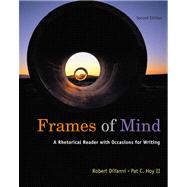
| The Practice of Writing | |
| Why Am I Writing Essays? An Occasion for Writing | |
| Using Your Voice and Finding Your Character | |
| Moving from Evidence to Idea to Essay | |
| Evidence | |
| Idea | |
| Essay | |
| How to Reveal the Discoveries | |
| Analysis | |
| Interpretation | |
| Reflection and Meaning | |
| Making Evidence and Discovery Work Together | |
| An Occasion for Writing: a Student''s Process Preparing to Write | |
| Integrating a Visual Text | |
| Moving toward Essay | |
| Creating a Scene | |
| Integrating a Written Text | |
| Writing Thoughtfully | |
| Reflecting (Analysis and Conception) | |
| Rhetorical Considerations for Essays | |
| An Introduction to Visual Understanding | |
| Keeping Your Eyes Open and Learning to See | |
| A Strategy for Visual Understanding | |
| Looking and Responding | |
| Analyzing Images: Categorizing to Make Sense of What You See | |
| Focal Point and Emphasis | |
| Figure-Ground Contrast | |
| Grouping: Proximity & Similarity | |
| Color | |
| Continuation | |
| Line | |
| Closure | |
| Narration or Story | |
| Context | |
| The Whole Composition | |
| Two Annotated Visuals | |
| Chrysler, Drive=Love [Advertisement] | |
| Monumental Posing [Photograph] | |
| Communicating What You See | |
| For Further Reading | |
| A Sample Student Paper | |
| Ryan Pollack, Visible Feelings | |
| Analysis Defining Analysis | |
| How Analysis Functions | |
| Recognizing Analysis | |
| Using Analysis in Writing | |
| Annotated Paragraph | |
| Analysis and the Other Patterns of Inquiry | |
| Annotated Reading: The New York Times, Neighborly Vultures | |
| Perspectives on Fear | |
| Forms of Mind: an Occasion for Analysis | |
| The Importance of Marvels [painting] | |
| The Treachery of Images [painting] | |
| The Birth of Venus [painting] | |
| Annie Dillard, Living Like Weasels | |
| The Nature of Consciousness: An Occasion for Analysis | |
| Young Interracial Couple [photograph] | |
| Central Park with Boys in Trees [photograph] | |
| Central Park [photograph] | |
| Youth Holding Kitten [photograph] | |
| The Bird of Paradise: The Hunter and The Poet | |
| Poetic Moments: An Occasion for Analysis | |
| Tree of Life [photograph] | |
| And Eve [poem] | |
| Thunderstorm [photograph] | |
| Life Cycle of a Thunderstorm [illustration] | |
| Toys | |
| Giving Up The Gu | |
| The Man Who Mistook His Wife For a Hat | |
| The Tell-Tale Heart | |
| Description | |
| Defining Description | |
| How Description Functions | |
| Selecting Details Organizing Details | |
| Recognizing Description | |
| Metaphor | |
| Simile | |
| Using Description in Writing | |
| Annotated Paragraph: Virginia Woolf, from Moments of Being | |
| Description and the Other Patterns of Inquiry | |
| Annotated Reading: Cynthia Ozick, The Seam of the Snail | |
| Love Sick | |
| The Truth of Mind: an Occasion for Description | |
| Parasympathetic and Sympathetic System Diagram [illustration] | |
| Heart in Voh [photograph] | |
| From One Writer''s Beginning [essay excerpt] | |
| On Not Looking at Pictures | |
| Ways of Seeing (and not): An Occasion for Description | |
| Las Meninas [painting] | |
| Titian, Entombment [painting] | |
| The Myth of The Latin Woman | |
| Facing Races: An Occasion for Description | |
| The Face of Tomorrow [poster] | |
| Georgia O''Keeffe | |
| Death of a Moth | |
| Islands | |
| The Storm | |
| Narration | |
| Defining Narration | |
| How Narration Functions | |
| Sequence, Causality, and Effect | |
| Choosing Events | |
| Selecting and Ordering Details | |
| Recognizing Narration | |
| First-Person Plural (We) | |
| Second-Person Singular and Plural (You) | |
| Third-Person Singular and Plural (He/She, They) | |
| Other Voices | |
| Using Narration in Writing Annotated Paragraph | |
| Narration and the Other Patterns of Inquiry | |
| Annotated Reading: Roy Reed, Wolf Hunt | |
| Once More To The Lake | |
| Time Passes: An Occasion for Narration | |
| Pond''s Extract bottles [photograph] | |
| Horse and Buggy [photo | |
| Table of Contents provided by Publisher. All Rights Reserved. |
The New copy of this book will include any supplemental materials advertised. Please check the title of the book to determine if it should include any access cards, study guides, lab manuals, CDs, etc.
The Used, Rental and eBook copies of this book are not guaranteed to include any supplemental materials. Typically, only the book itself is included. This is true even if the title states it includes any access cards, study guides, lab manuals, CDs, etc.